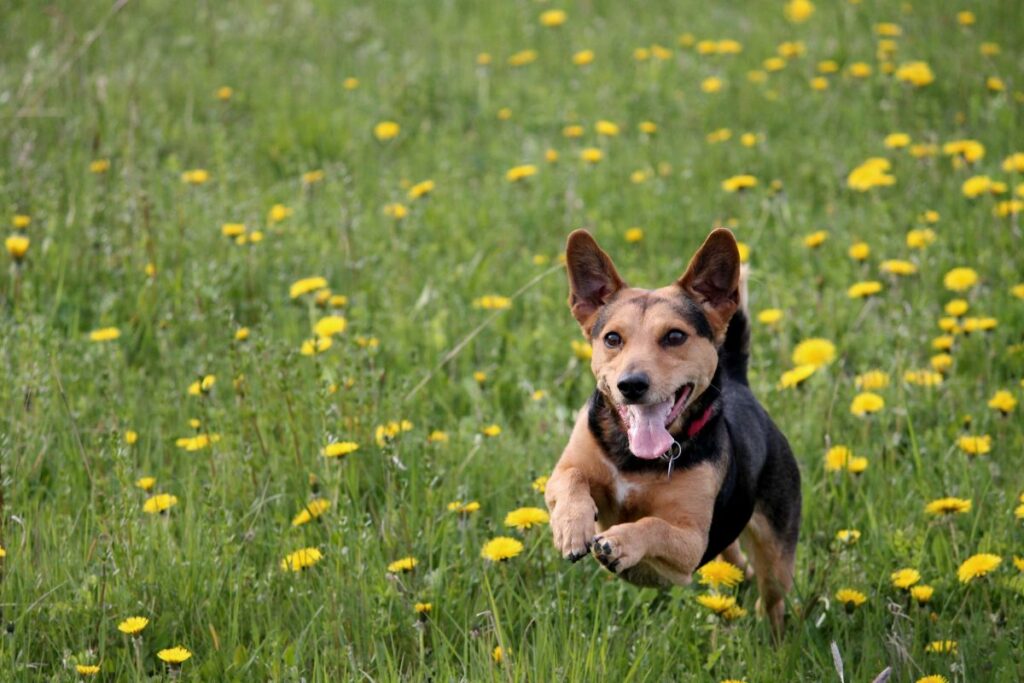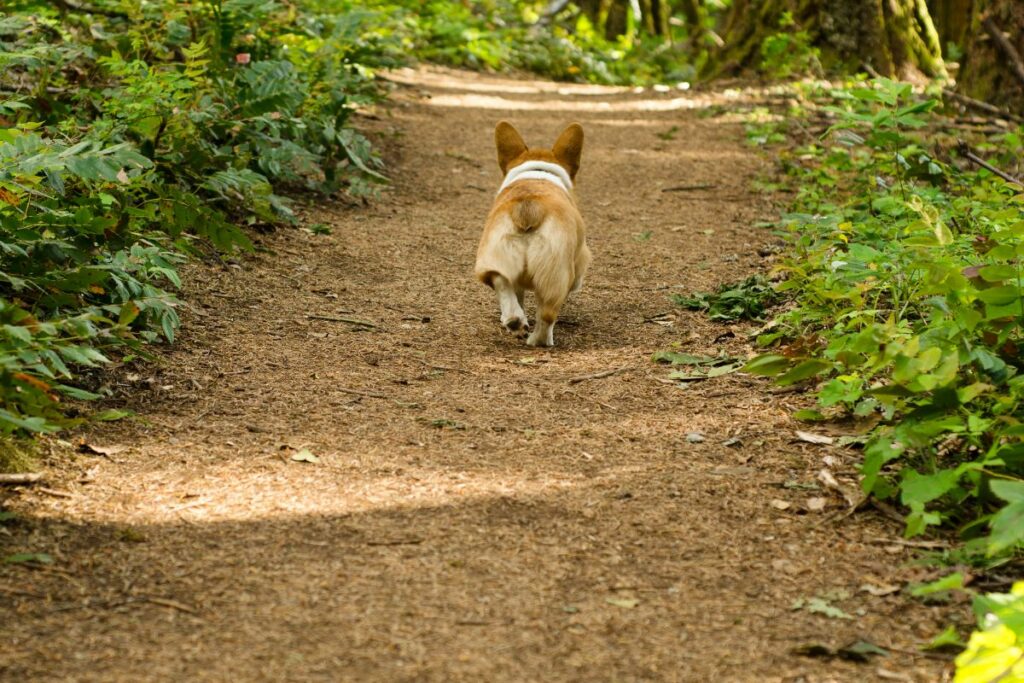Have you ever wondered why our dogs have a penchant for exploring the great outdoors?
In this exploration, we’re diving nose-first into canine behavior to decipher the age-old question: Why does my dog dash away any chance he gets?
Picture this: you’re calling Fido, and suddenly, he’s off on a solo mission, leaving you behind in the dust. We’ve all been there.

Join us as we unravel the quirks and reasons behind your dog’s speedy escapades.
From natural instincts to underlying needs, we’ll guide you through the doggy mindset, shedding light on behaviors that might puzzle you.
Understanding the reason why your dog bolts is the first step to stopping your dog from bolting. So, grab a little treat, settle in, and let’s figure out why our dogs run away.
Natural Instincts
In the canine world, exploring isn’t just a pastime; it’s coded into their DNA.
Picture your pup channeling their inner wolf, fueled by instincts passed down through generations. Back in the wild, their ancestors roamed expanses, hunting and surviving as a pack.
Today, your domesticated fur ball retains that ancestral pull, triggering the urge to sniff out new horizons.
Understanding this primary drive sheds light on why your furry companions occasionally yearn for the freedom of open spaces.
So, when Fido dashes off, it’s not necessarily defiance – it’s a nod to the untamed spirit that still flickers in every tail-wagging household adventurer.
Curiosity And Exploration
Curiosity isn’t just a trait in cats – dogs are equally captivated by the mysteries of their surroundings. Imagine your pup’s world as a tantalizing buffet of scents and sights, irresistible to their inquisitive nature.
A dog’s extraordinary sense of smell transforms a simple stroll into a sensory extravaganza, with each scent holding a story waiting to be unraveled.
This unquenchable curiosity, coupled with a desire to explore, propels them into unexpected adventures.
So, when your furry friend darts off the beaten path, it’s a pursuit of the captivating tales lingering in the air, making every walk an enthralling chapter in their olfactory novel.
Boredom And Lack Of Stimulation
If you’ve ever seen your dog eyeing the horizon with a hint of restlessness? Boredom might be the culprit.
Dogs, much like us, crave mental and physical stimulation. When left unfulfilled, this gap pushed them to seek excitement beyond the backyard. Combat the canine doldrums with engaging activities.
Puzzle toys, interactive games, and varied walks spice up their routine, ensuring a content and fulfilled companion. Remember, a mentally stimulated dog is a happy dog.
So, let’s toss aside the boredom blues together, enriching your pup’s world with activities that spark joy, keeping their tails wagging with enthusiasm, not restlessness.
Fear And Anxiety
If you’ve noticed that your dog mostly bolts in response to a loud noise or unfamiliar situations, then fear and anxiety could be major motivators.
Just like us, dogs experience stress, and running away can become a coping mechanism. Recognizing signs of anxiety – panting, pacing, or excessive licking – is crucial.
To ease their worries, create a safe haven at home, employ calming techniques like soothing music, and gradually expose them to anxiety-inducing triggers.
By understanding and addressing their fears, you become their reassuring anchor.

Social Interaction
Your pub, a social butterfly but with fur, thrives on connections. The desire to interact isn’t just a whim; it’s hardwired.
Dogs are pack animals by nature and seek companionship, whether with fellow canines or other creatures.
Encourage positive socialization from an early stage, fostering a well-balanced, confident companion.
Regular play dates, visits to the dog park, or even a friendly neighborhood stroll can help your furry friend build a social circle, reducing the temptation to dart off in search of company.
Prevention And Solutions
Keeping your canine companion close and content involves a bit of strategic planning.
Start with secure fencing and regularly check for potential escape routes. Reinforce recall commands through positive reinforcement, making coming back to you irresistibly rewarding.
Addressing the root causes requires a keen eye for behavioral cues. If boredom is the culprit, spice up routines with engaging activities. For anxiety, create a calm environment and gradually desensitize them
Social butterflies benefit from regular interactions. Remember, a well-exercised and mentally stimulated dog is less likely to entertain the idea of a solo adventure.
By blending preventive measures and targeted solutions, you’ll foster a secure and joyful bond with your furry friend.
Microchipping And Identification
In the unexpected event that your furry friend takes off too fast for you to stop them, having a safety net is paramount. Enter microchipping – the unsung hero of pet identification.
This tiny device holds a wealth of information, ensuring a swift reunion if your dog decides to explore the neighborhood solo.
Beyond the chip, uphold responsible pet ownership practices: keep tags updated, provide a sturdy collar, and secure your backyard. These simple steps can make all the difference.
By championing microchipping and responsible habits, you’re not just a pet owner; you’re a guardian equipped to ensure that your four-legged family member always finds their way back home.
Final Thoughts
As we wrap up this exploration into the world of canine escapades, let’s recap the essentials. Dogs run away for a medley of reasons – instincts, curiosity, boredom, anxiety, or craving social interaction.
Understanding these motivations is the key to preventing those unexpected dashes and nurturing a happy, harmonious relationship.
Implementing practical tips like secure fencing, mental stimulation, and positive socialization not only keeps your furry friend content but also strengthens the bond you share.
Remember the significance of microchipping for a fail-safe identification plan. By taking proactive steps and addressing root causes, you can rest assured that you’re doing the best you can for your furry pal.
FAQs
What should I do if my dog does run away?
Act swiftly. Contact local shelters, use social media, and inform neighbors. Having updated identification and a microchip significantly aids in locating your furry friend.
What are common reasons for dogs running away?
Dogs may run away due to instincts, curiosity, boredom, anxiety, or a desire for social interaction.
Regularly update your dog’s tags with current contact information to ensure a swift reunion if they get lost.
- Help! My Dog Won’t Leave His Bum Alone! - November 21, 2023
- Grooming Guide: How To Groom A German Shepherd - November 20, 2023
- Dog Behavior: Why Do Dogs Run Away? - November 18, 2023










